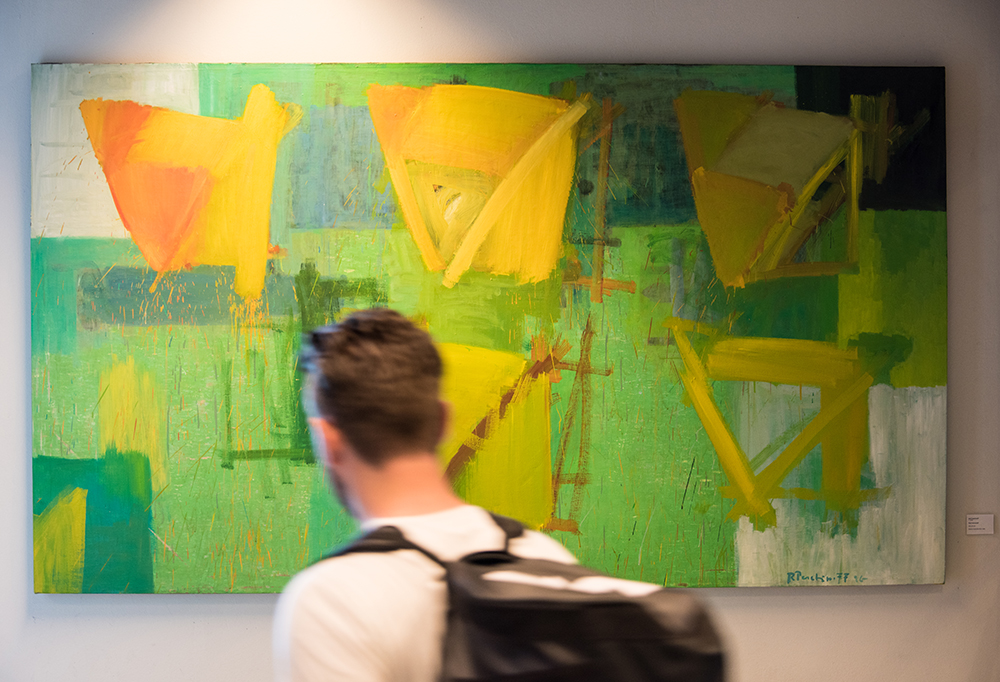Each year, the state, municipalities and regions acquire art for more than SEK 100 million. About half of the acquired art is so-called “moveable art”, art that is not integrated into a particular property. Officials and procured art consultants purchase the art which is then placed in public premises or public workplaces. Artworks are often placed in the form of art collections, where several works interact with each other and the surroundings to form a larger whole.

Why is Art Acquired with Public Funds?
The idea that contemporary artists’ artworks should benefit the public has been a component in public cultural policy since the late 1930s. Placing art in the public realm or in governmental offices and buildings, universities and other public institutions, makes possible enriching art experiences for those who are not regular visitors to museums, art institutions and galleries. Due to the number and geographical dissemination of public art, acquisitions are a significant factor in the financial situation of artists.
Which Art Goes Where?
There is much to take into account when an artwork is placed in a more or less public environment. The activities that are conducted there, who will see the art and the design of the premises are examples of aspects that must be considered. And one must also ask oneself what the art will do at the site in question? Art that is selected to only match the colours of the walls or the upholstery will soon be perceived as uninteresting. Artworks are often placed in storage when the walls are repainted and the furniture is changed. Art that continues to speak to us over time must be more than interior design details. It must be capable of arousing ideas and feelings, challenging our habitual way of seeing and give rise to creative discussions between people.
How Is Art Selected?
Each person is unique, and each person’s experiences are also unique. Therefore there is no “right” and “wrong” when it comes to experiencing art. Perhaps your perception of an artwork will change after you have learnt more about it, but the experience is always individual. It also means that not everyone has to like all the works that form part of an art collection. Artworks are like people: they have an inherent ambiguity that makes some people like them, others are indifferent and a few detest them. The basic rule, however, does not change, it is legitimate – and desirable – to experience strong feelings in the encounter with an artwork.
The Importance of Dialogue
Artworks are often (but not always) physical objects. They are also projection surfaces, where conversations develop and where ideas and emotions are exchanged. Therefore the element of dialogue is important both when the art collection is being planned and after it has been installed. The discussion about art adds a layer to the viewer’s experience, enhances it and creates conditions that enable the exchange of opinions with others. It is optimal if the dialogue continues after the art collection has been installed, in the form of local guided art tours or web presentations, for example. This charges the artworks – and the collection – with new energy.
The Importance of Being Different
When one works with art it is never entirely on the basis of a predetermined model. Certain elements, such as anchoring occur via an advisory group, and are always important. But the person who compiles the art collection is a unique individual whose knowledge and experience must be allowed to influence the final result, in the same way that the dynamics in the advisory group places its particular emphasis on the anchoring process. Acknowledging differences is to lay the foundation for an exciting collaboration and ensures that the art collection has a composition that stimulates and leads to dialogue.
Diversity Is Strength
The diversity of art is reflected in the diversity that characterises the creation of the art collections. Formulating a simple checklist on how to create an art collection is therefore an impossible task. The best guidance is to be found in the experiences of the art consultants themselves. See below for their stories!